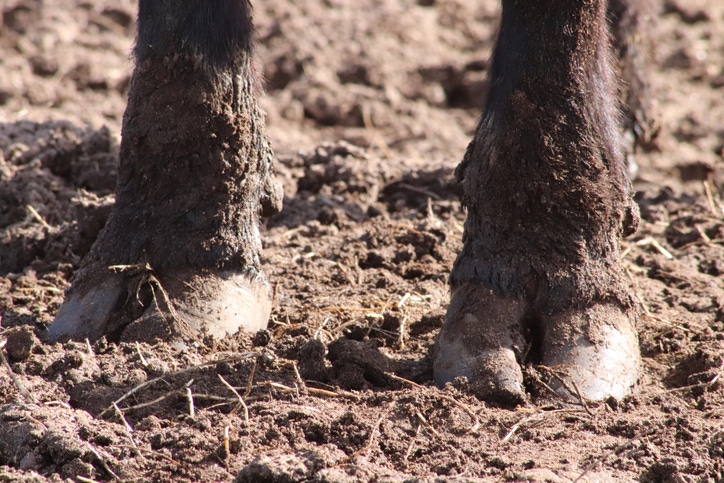Muddy conditions can lead to thinner cows and weak or stillborn calves.
February 4, 2019

Cattle have been getting pretty muddy as a result of extremely heavy rainfall in 2018 and precipitation so far this year in parts of the Midwest, according to an announcement from The Ohio State University.
The mud can lead to thinner cows because it takes a lot of energy for cattle to trudge through mud and to keep their bodies warm when cold mud sticks to them, said John Grimes, beef coordinator for Ohio State University Extension.
Pregnant cows that don’t gain enough weight are at risk of having weak or stillborn calves and of not being able to produce enough milk for their offspring, he said.
“When it’s cold and wet, you and I can be inside and set the thermostat at 70°F, but cows have to adapt,” Grimes said. “It’s better for them to be in 20°F and dry than 30°F and rain.”
In addition to the adverse muddy conditions, the 2018 rainfall also led to delayed hay harvests. Hay that’s harvested late often is higher in fiber and can be lower in nutrients for the cattle that eat it, Grimes said.“So, you can put more hay in front of them to eat, but if the quality isn’t good, it’s not going to help,” he explained.
A pregnant cow typically weighs 1,200-1,400 lb. at the time it gives birth. Much of that weight is gained in the last 30-45 days before the calf is born. The cow should be gaining 1 lb. a day in the last month or so of pregnancy, Grimes noted.
Farmers and ranchers can try to fatten up their cows with supplementary feed, Grimes said. However, cattle owners should first have their hay tested for nutrients to see what, if anything, is lacking in it. Even if hay has all the necessary nutrients, cows still might need a supplement because of the additional stress that the weather is putting on their bodies, Grimes said.
Ideally, in summer, farmers should scrape their feedlots, smoothing out areas that could fill up with water, Ohio State Extension beef cattle specialist Stephen Boyles added. They might need to build a ditch to send the water away from the feedlot, he noted.
“The ground was saturated even in the summer,” Boyles said. “Then, the fall brought more rain, and there just weren’t a lot of places for the water to go.”
Source: The Ohio State University, which is solely responsible for the information provided and is wholly owned by the source. Informa Business Media and all its subsidiaries are not responsible for any of the content contained in this information asset.
You May Also Like


.png?width=300&auto=webp&quality=80&disable=upscale)
